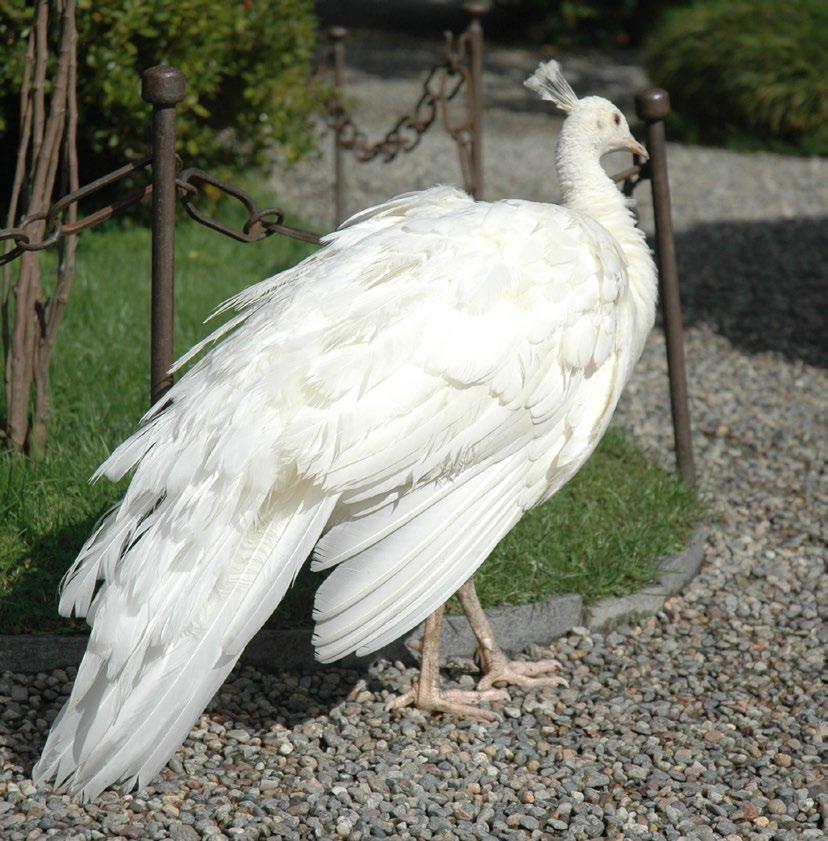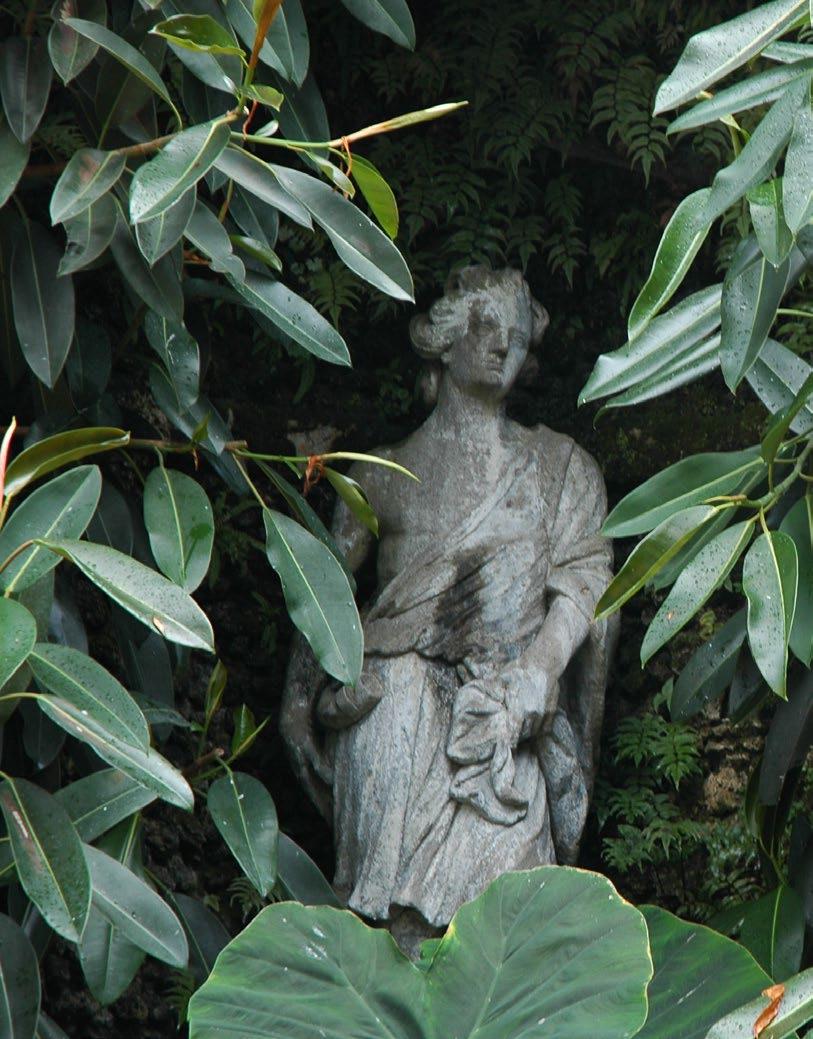
6 minute read
Isola Bella
Exquisite Gardens
of
Advertisement
Isola Bella written & photographed by: Nicolette Johnston
The gray sky posed as a dramatic background on Lake Maggiore as our Italian guide boat pulled off the dock in Stresa to slowly cruise past Malgora, a tiny 200 square meter island, then pulled up to one of the most dramatically picturesque islands in all of Italy, known as Isola Bella. After a morning tour inside the palace to witness the ornate shell grottoes and painting collection, followed by a brief down pour at lunch while taking shelter in the cafe, the clouds later opened up and the warm sun emerged to transform what had been a cool September morning into a gorgeous afternoon. The shift in weather on a fall day, allowed an impressive photographic tour of the breathtaking gardens.

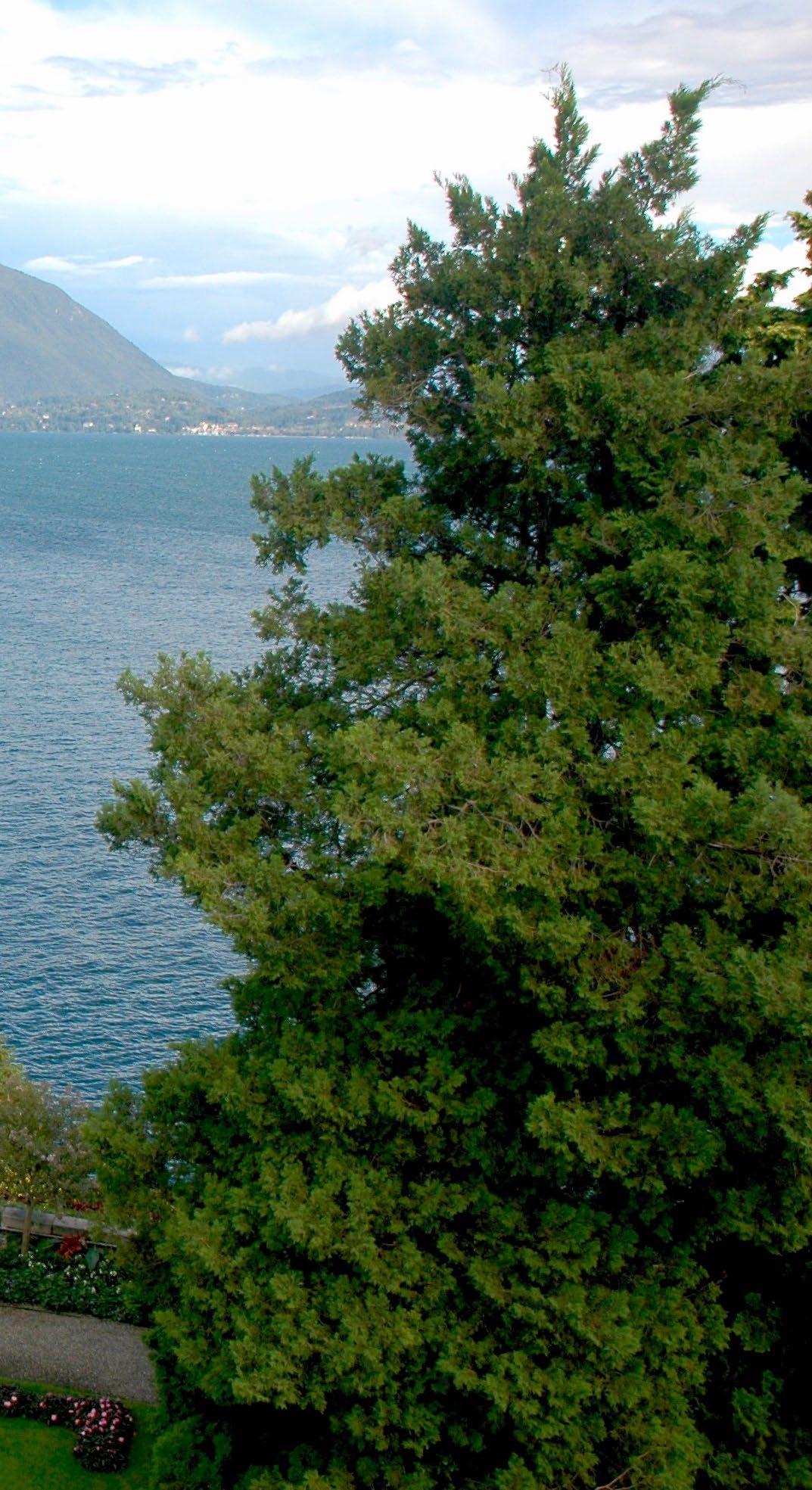



AROMA REALE EAU DU PARFUM FROM ISOLE BORROMEE CAN BE PURCHASED ONLINE AT: SHOP.ISOLEBORROMEO.IT
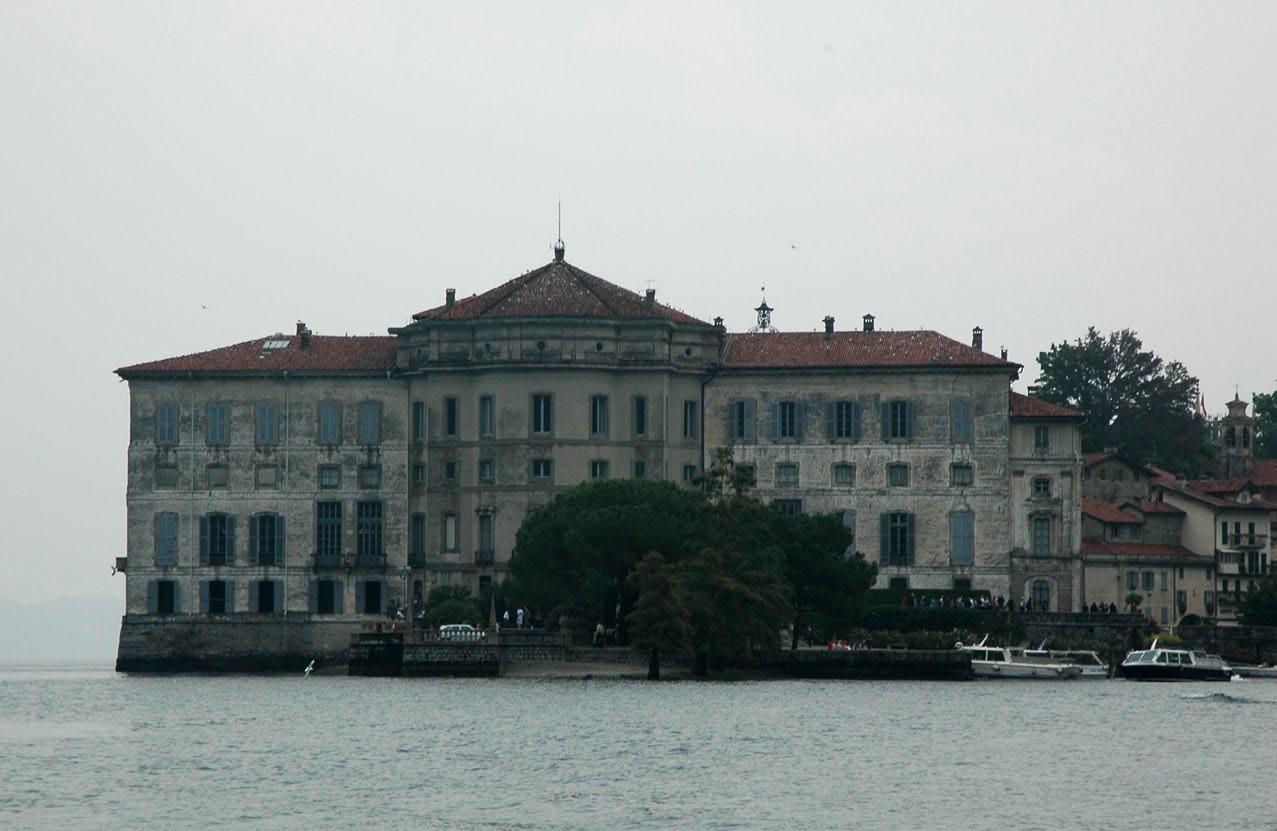



One of the first recorded writings of Isola Bella comes from English diarist, Bishop Gilbert Burnet, who visited the island in 1685 and wrote that it was “one of the loveliest spots of ground in the World”. Each year thousands of visitors come to the beautiful island of Isola Bella, to enjoy the majestic gardens and palace. An island that was once just a rocky crag belonging to a fishing village until 1632, when it was purchased by the Borromeo family, and has stayed within the family of Italian bankers ever since.
Carlo Borromeo III ordered construction and contracted Angelo Crivelli to develop the creation of their palace and paradise. The island was named after Isabella D’Adda, countess Borromeo. However, plans came to a lull in the middle of the century as the Duchy of Milan was struck by the plague. Once the island was passed down to Carlo’s sons, Cardinal Giberto III and Vitaliano VI Borromeo, construction then continued. Milanese architect Carlo Fontana completed the villa turning it into a place for European nobility to gather and celebrate. The gardens were later completed by nephew Carol IV and inaugurated in 1671.


Over a century later, after the French victory at the battle of Morengo, concerts and banquets were held in the garden in 1797 to honor Napolean and his first wife Josephine de Beauharnais. It is also said that Caroline of Brunswick, the Princess of Wales fell in love with Isola Bella and tried to convince the Borromeo family to sell Isola Madre or the Castell di Cannero island to her, but the family turned down her offer. She later established herself on the banks of Lake Como at Cernobbio in the Villa d’Este.
Italian Prime Minister Benito Mussolini, French Prime Minister Pierre Laval, and British Prime Minister Ramsay MacDonald High gathered at Isola Bella to hold a conference in the beautiful Palazzo Borromeo, where it was decided on April 14, 1935 to reaffirm the Locarno Treaties and proclaim that Austria’s example of independence would be their goal to resist any future attempts by the Germans to change the Treaty of Versailles. This was known as the Stresa Front agreement. However, this agreement began to break down just two months after it was signed.
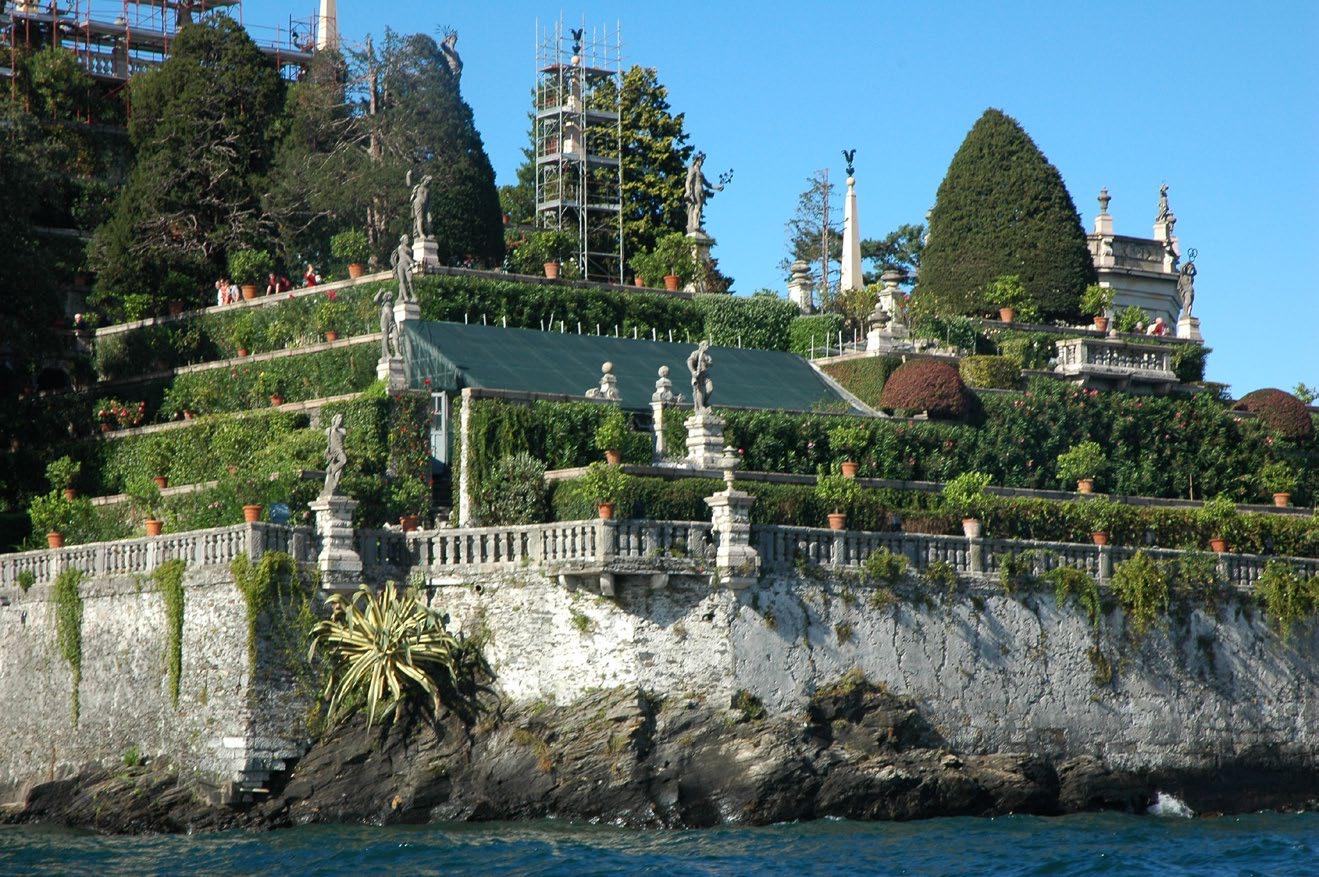
Many of the original plans for the gardens were not completed until recent years. Those visiting the picturesque 17th century Baroque gardens will discover a 200-year-old camphor (cinnamomum camphora) tree. There are many exotic variants of flora and fauna, such as azaleas, rhododendrons, camellias magnolias, lemon and orange trees, pomegranates, lilies of the valley, creeping figs and much more. Visitors will discover white peafowl leisurely roaming the courtyards outside.
At the top of the water theatre, a statue of a unicorn lunges on its hind legs at one of the highest points of the gardens as a symbol of the Borromeo family. The Courtyard of Diana is named after the goddess statue which stands in the center of the courtyard. On the south side of the island, there are formal parterres garden allowing a beautiful cliff edge view of Lake Maggiore and the town of Stresa. There are six subterranean grottoes which are crafted out of pebbles, shells and stucco. One of two beautifully constructed pavilions hides a large water pump which brings water in from the lake to use for the fountains on the island.




BORROMEAN ISLANDS Aside from Isola Bella, the Borromean Islands consist of Isola Madre, Isola dei Pescatori, and Isolino di San Giovanni in the Italian part of Lake Maggiore. The fifth and tiniest island is Malghera, which only measures only 200 square meters and lies between Isola Bella and Isola dei Pescatori. It offers bushy vegetation and a small beach.

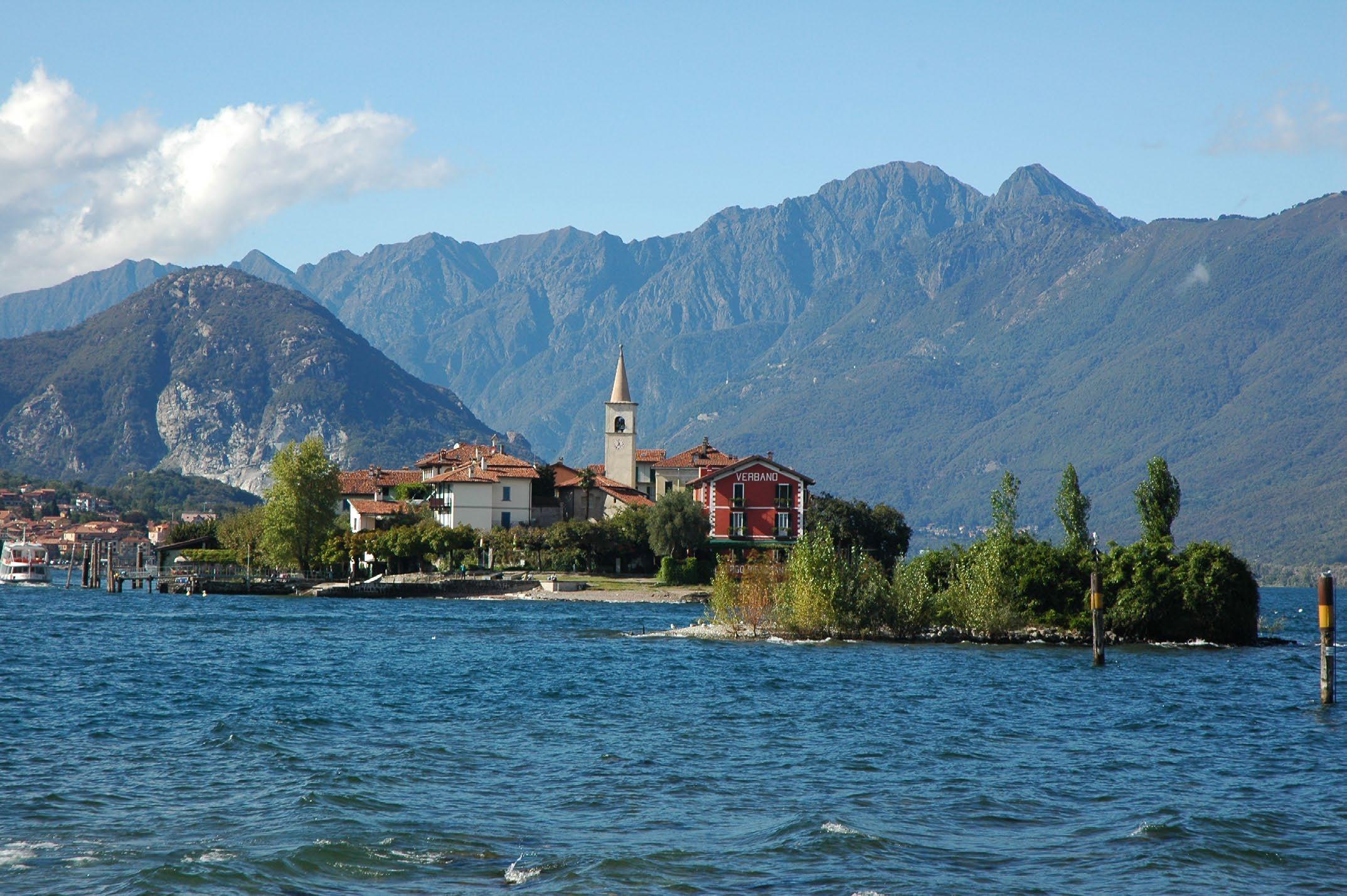







WHITE PEAFOWL White peafowl are forest birds that nest on the ground, but roost in trees. Their lifespan can be 40-50 years. They are commonly mistaken for or referred to as an albino peacock; however, the term peacock is properly reserved for the male. The female is known as a peahen and babies are sometimes called peachicks. But the term peafowl is used for all; and although albino peafowls do exist, they are quite rare.
White peafowl have a condition called leucism, which causes an overall reduction in different types of pigment. This can result in the complete lack of coloration of their plumage, while preserving their normal eye colour (many have a deep blue eye color). True albino peafowl have a complete lack of melanin, resulting in the albino’s characteristic red or pink eyes. Leucistic peachicks are actually born yellow and turn white as they mature.



